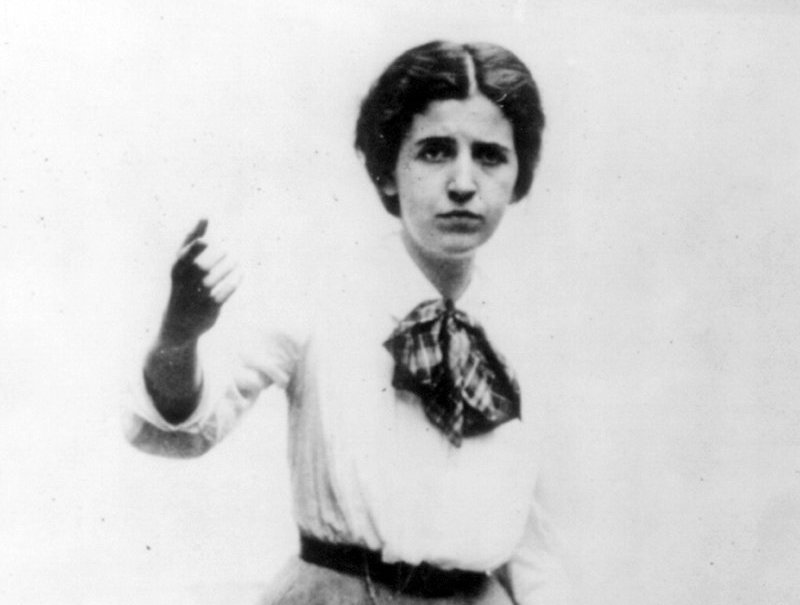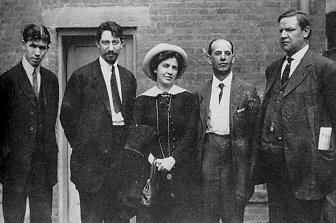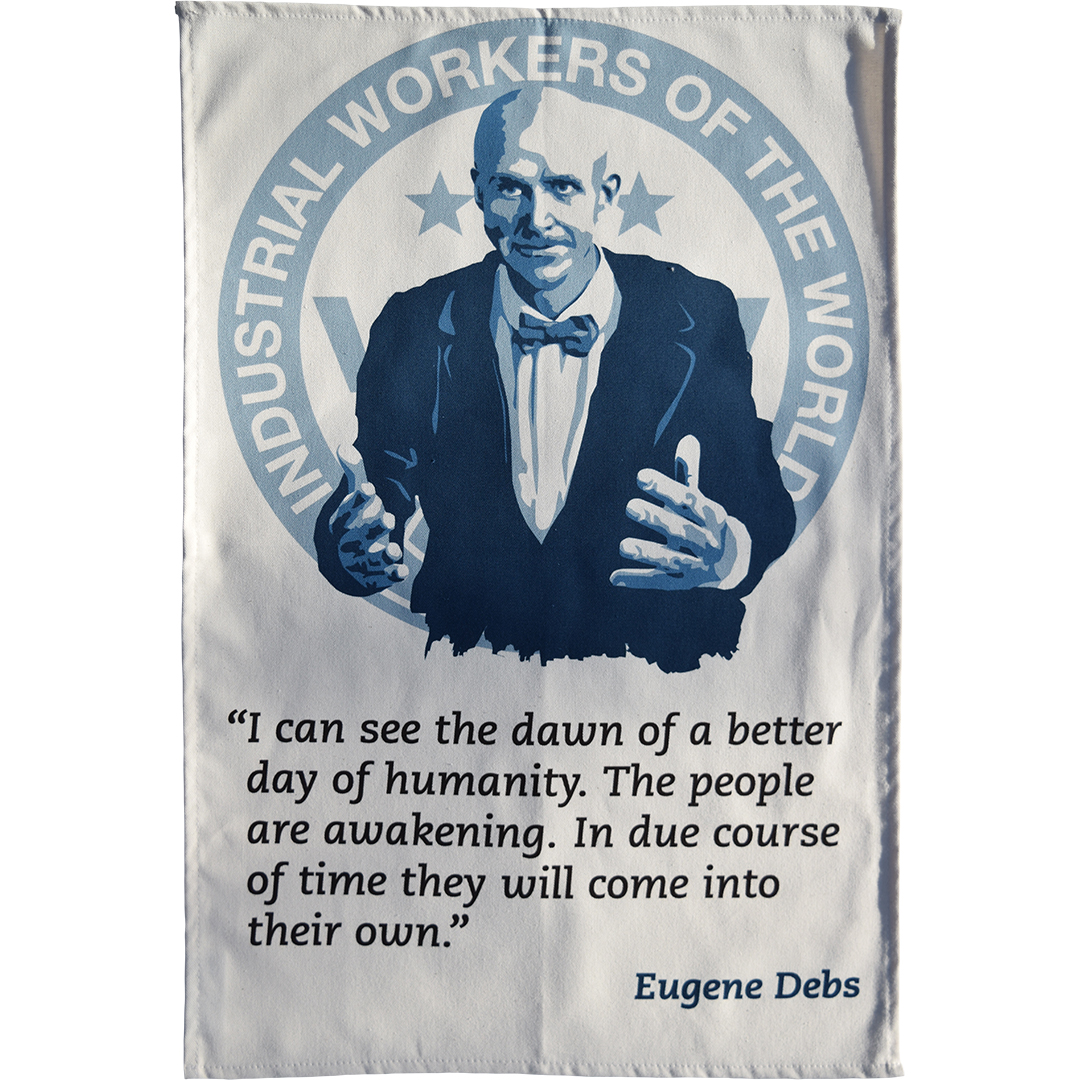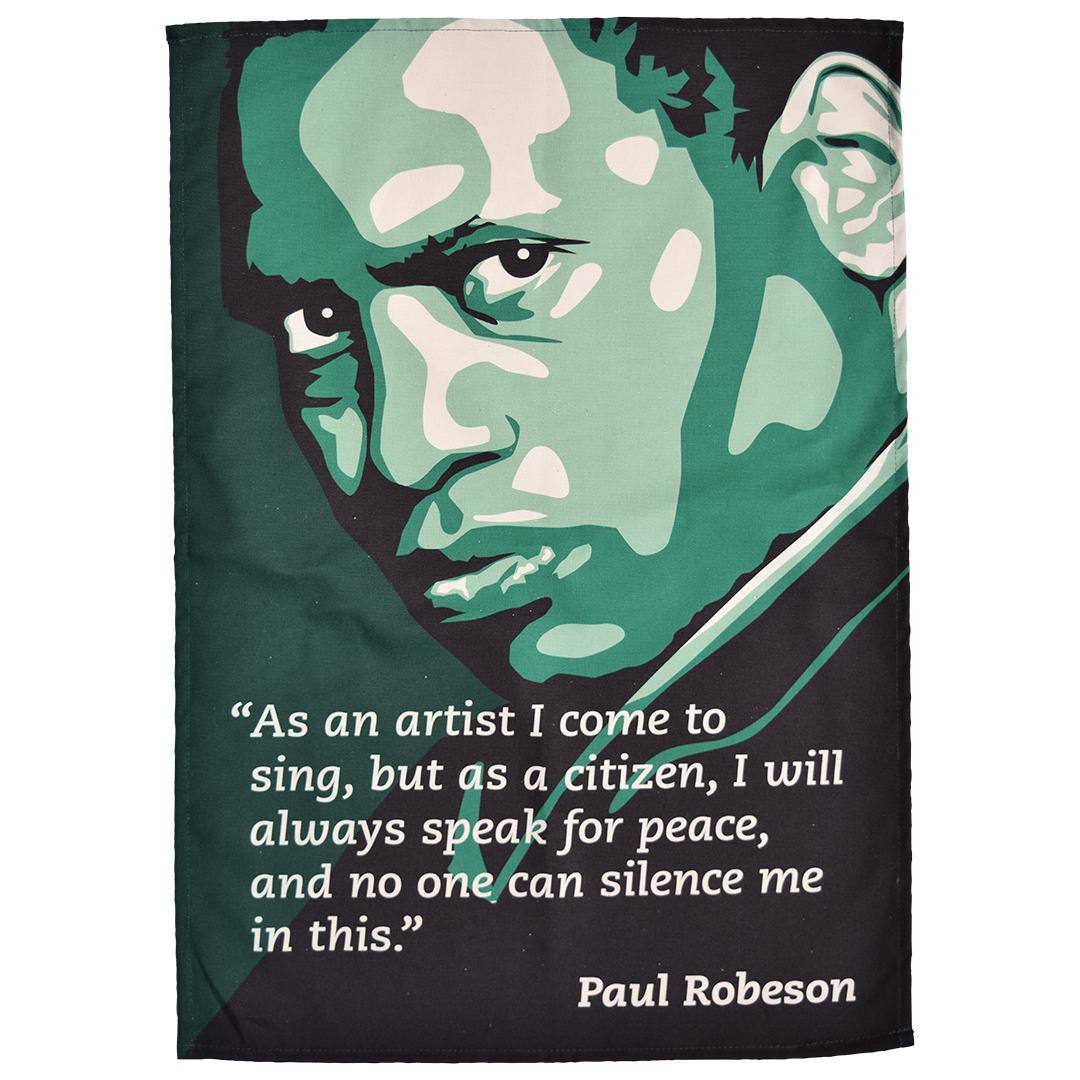Rebel Girl: The Story of Elizabeth Gurley Flynn
Posted by Pete on Aug 7th 2021

Born on this day in 1890, Elizabeth Gurley Flynn devoted her life to the radical struggle
“History has a long-range perspective. It ultimately passes stern judgement on tyrants and vindicates those who fought, suffered, were imprisoned, and died for human freedom.”
Few Americans have needed to believe this more than Elizabeth Gurley Flynn (1890-1964).
Being a unionist and a Communist in mid-century America was never going to be easy. For Flynn and other radicals of the era, justice was often more of a dream than a reality.
But that didn’t stop them from dreaming.
A socialist and trade unionist, Eugene Debs was among the most famous radical figures in the US at the time.
Click to view our Eugene Debs tea towel
The daughter of working-class Irish parents, Flynn was born in Concord before moving to New York in 1900.
And she committed to the life of a rebel early.
Her parents, Annie and Thomas, introduced Elizabeth to socialist politics and she was giving speeches at the Harlem Socialist Club aged just 15.
These were the glory years of American socialism, before it was repressed at the end of WW1.
Labor radicals like
Eugene Debs, Emma Goldman and Big Bill Haywood were household names.

A photograph from 1913 showing the leaders of the Paterson Silk Strike, with Elizabeth Gurley Flynn in the middle.
In 1907, still a teenager, Flynn became a full-time organizer for the Industrial Workers of the World, colloquially known as the Wobblies.
Like a young
Mother Jones, she crisscrossed the US, helping organize strikes across the country, from garment workers in Pennsylvania to coal miners in Minnesota.
Fighting for the downtrodden, Flynn became known as the “East Side Joan of Arc”.
In 1920, alongside fellow radicals like
Jane Addams and Helen Keller, Flynn co-founded the American Civil Liberties Union (ACLU). Civil liberty was a working-class issue in those post-war years, when the federal government was locking up or deporting Leftists wherever it could find them.
And Flynn went on to join the Communist Party (CPUSA) in 1936, at a time when it was gaining prestige in America for its defense of African Americans against Jim Crow and its mobilization of volunteers to
fight fascism in Spain.
By now a seasoned activist, Flynn rose through the ranks and was elected to the Communist Party’s national committee in 1938.
During World War Two, the Communist Party enjoyed a high ebb as the US and Soviet Union fought together against the Nazis. Although unsuccessful, Flynn got 50,000 votes for the Communist Party when she ran for Congress in New York in 1942.
But then, after the World War, came the Cold War.
Like Flynn, the singer and activist Paul Robeson felt the full force of anti-Communist sentiment in Cold War America.
Click to view our Paul Robeson tea towel
Nuclear competition abroad and McCarthyism at home wreaked havoc on Elizabeth Gurley Flynn’s life, just as it did to Paul Robeson, W.E.B. Du Bois, and countless other Leftists in the US.
She was arrested along with several other Communist Party members in 1951 under the controversial Smith Act – almost definitely a violation of the First Amendment.
But Flynn wasn’t new to persecution by the state. By the 1950s she was an old hand.
Ever since her teenage years with the Wobblies, she was used to being accosted and detained for her part in the class struggle.
Support from wider American society was scarce. Few were willing to argue for socialists or communists’ basic constitutional freedoms during the two Red Scares after WW1 and WW2. People were afraid – that was the point.
After two years in prison, Flynn was released in 1957, and resumed her political activities. In fact, in 1961, she became the first National Chairwoman of the US Communist Party.
By this point, Flynn was in her seventies. And in 1964, on a trip to the Soviet Union, she fell ill and died of natural causes.
But her friends in the labour movement knew exactly how to honour her. After a huge state funeral in Moscow's Red Square, her body was flown back to the United States and buried in Chicago’s Waldheim Cemetery - alongside the likes of Emma Goldman and the
Haymarket Martyrs.
To the end, she was an American radical in the American radical tradition – the East Side Joan of Arc.
As the Wobbly singer Joe Hill (1879-1915) wrote in his tribute to Flynn,
‘The Rebel Girl’ –
“She’s a rebel girl,
A rebel girl,
She’s working-class, the strength of this world,
From Maine to Georgia you’ll see,
Her fighting for you and for me.”
Key Years for Elizabeth Gurley Flynn:
- 1890 - Elizabeth Gurley Flynn is born
- 1905 - Aged 15, Elizabeth began giving speeches at the Harlem Socialist Club
- 1907 - Became a full-time organiser for the Wobblies
- 1920 - Co-founded the American Civil Liberties Union
- 1936 - Joined the Communist Party
- 1942 - Ran for Congress and received 50,000 votes
- 1951 - Arrested under the Smith Act
- 1957 - Released from prison
- 1964 - Died in the Soviet Union at the age of 74


